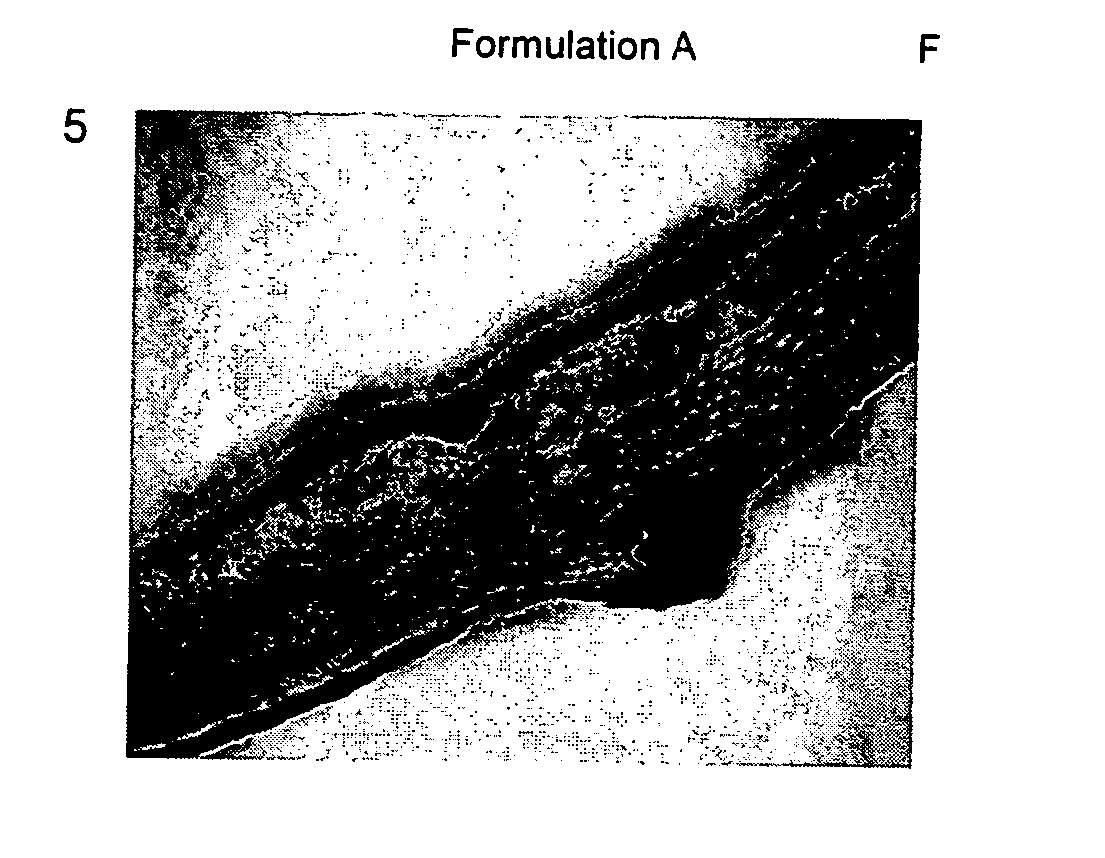Blends of gelling and non-gelling starches with gellan gums and plasticizer
a gellan gum and plasticizer technology, applied in the direction of surface treatment compositions, chemistry apparatus and processes, capsule delivery, etc., can solve the problems of high cost and continuity of safe supply, undesirable bovine sources for certain individuals, and many drawbacks of gelatin, etc., to achieve excellent strength and elongation, excellent seal structure, and similar textural and functional properties
- Summary
- Abstract
- Description
- Claims
- Application Information
AI Technical Summary
Benefits of technology
Problems solved by technology
Method used
Image
Examples
example 1
Modulus of Various Starch Gels
[0043] The modulus of four starch gels were measured using five weight percent of starches dissolved in water. Each starch solution was cooked in a 100° C. steam bath for 30 minutes. This mixture was cooled overnight, and each gelled starch was cut into a 25 mm diameter disk with 2.5 mm thickness. The disk was then tested on a TA Instruments ARES RFS, at 25° C., 10−1 rad / s, and 1% strain. The modulus measurements of various starches are shown in Table 1.
TABLE 1Modulus Measurements of Various Native StarchesStarch gelMung bean1Corn2Sago2Tapioca2Modulus (Pa)3,5002,00020038
1Product of SitThiNan, Thailand
2Commercially available from National Starch and Chemical Company, NJ
example 2
Formulation of Gelatin-Free Blends
[0044] Formulations A-D were made using the following method. Formulation A and B are exemplary formulations; Formulation C borders outside the preferred range of ratios of the gelling and non-gelling starches; Formulation D and E are outside the preferred range. For each sample, the liquid components (plasticizer, buffer salt, water) were mixed and added into a glass bowl of a food mixer (GE, Model #168949). Blended powder ingredients (starches and gellan gums) were added to the bowl, while blending at speed of 1-2. After all of the powders were added, the mixture was further blended for 2 minutes using speed of 3-5 to make a uniform dough. The dough was transferred into a food sealer bag, which was then vacuumed and sealed using a Foodsaver Sealer Professional III. The sample was then cooked in a steam bath for 90 to 120 minutes, and kneaded by hand at least every 30 minutes to ensure a uniform melt.
TABLE 2Components of Gelatin-Free BlendsABCBl...
example 3
Preparation of Films and Capsules
[0045] Each cooked melt of formulation A-D from Example 2 was poured separately onto a preheated plate (60-105° C.). Formulation E could not be poured since the material formed into a solid mass after the cooking process. For very tacky formulations and / or thick films, a thin layer of vegetable oil or other release agent was used on the plate. A preheated (60-105° C.) stainless steel applicator, with a 1-2 mm gap, was used to draw a film on the plate.
[0046] The capsules were formed from the wet film approximately 2 minutes after casting process.
[0047] The wet films were preserved under a moisture sealed condition immediately after the casting and examined for film properties approximately 24 hours later.
PUM
| Property | Measurement | Unit |
|---|---|---|
| temperature | aaaaa | aaaaa |
| viscosity | aaaaa | aaaaa |
| viscosity | aaaaa | aaaaa |
Abstract
Description
Claims
Application Information
 Login to View More
Login to View More - R&D
- Intellectual Property
- Life Sciences
- Materials
- Tech Scout
- Unparalleled Data Quality
- Higher Quality Content
- 60% Fewer Hallucinations
Browse by: Latest US Patents, China's latest patents, Technical Efficacy Thesaurus, Application Domain, Technology Topic, Popular Technical Reports.
© 2025 PatSnap. All rights reserved.Legal|Privacy policy|Modern Slavery Act Transparency Statement|Sitemap|About US| Contact US: help@patsnap.com


